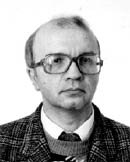Contents: 2024 | 2023 | 2022 | 2021 | 2020 | 2019 | 2018 | 2017 | 2016 | 2015 | 2014 | 2013 | 2012 | 2011 | 2010 | 2009 | 2008 | 2007 | 2006 | 2005 | 2004 | 2003 | 2002 | 2001
2004, 16
V/U-rhythm at the reading as indicator of the speech breath function state in stutterers
language: Russian
received 19.10.2004, published 04.11.2004
Download article (PDF, 250 kb, ZIP), use browser command "Save Target As..."
To read this document you need Adobe Acrobat © Reader software, which is simple to use and available at no cost. Use version 4.0 or higher. You can download software from Adobe site (http://www.adobe.com/).
ABSTRACT
In the paper the sequence of duration in acoustic signal with fundamental frequency of the speech and duration without it the following one after another is termed as Voice/Unvoice-rhythm (V/U-rhythm). In our previous papers there was found out that such rhythm's structure is described rather well experimentally with the help of the quadratic logistic mapping and Feigenbaum's scenario of route to chaos for this mapping with control parameter. This scenario consists of two “wings”. The initial part of the lower "wing" of the scenario with suitable small control parameter values corresponds to U-segments in rhythm, the initial part of the upper "wing" with suitable small control parameter values corresponds to V-segments. After critical value of the control parameter these "wings" are mixed forming V/U-rhythm of a normal speech. Domain of the scenario before critical point corresponds to regular V/U-rhythm which is typical for fluency disorders as repetitions. In this domain there are regular ratio between the total durations of V and U-segments (ratio Vtotal/Utotal is approximately 3/2). In chaos domain after critical point this regularity gets lost. It is suggested to use this loss of regularity as the way and indicator of stutter correction. The breath regime without phonation variate so long as the regular ratio Vtotal/Utotal will not disappear. According to the functional composition law, this loss shows that after switching on the phonation the system will be free from stuttering. Reliable statistical data confirming theory is presented in the paper.
11 pages, 4 figures
Сitation: O.P. Skljarov. V/U-rhythm at the reading as indicator of the speech breath function state in stutterers. Electronic Journal “Technical Acoustics”, http://www.ejta.org, 2004, 16.
REFERENCES
1. Скляров О. П. Онтогенез речи и сценарий развития ее V-ритмов. Электронный журнал «Техническая акустика», http://webcenter.ru/~eeaa/ejta, 2004, 7.
2. Скляров О. П. Элементы теории ритма речи на основе физической феноменологии его нарушений. Автореф. дисс. … доктора физ.-мат. наук. СПбГУ, СПб, 1999.
3. Скляров О. П., Оноприйчук Е. И. и др. Коррекция заикания с помощью лого- и психотерапевтических воздействий на речевое внимание. В сб. «Актуальные вопросы логопатологии». (ред. И.В. Королева) СПб.: СПб НИИ уха, горла, носа и речи, 2004, 89–100.
4. Starkweather, C. W. The development of fluency in normal children. Stuttering therapy: Prevention and intervention with children. (ed. H. Gregory). Memphis, TN: Speech Foundation of America, 1985, 9–42.
5. Yairi, E., Ambrose, N. G. Early childhood stuttering 1: Persistency and recovery rates. Journal of Speech, Language and Hearing Research, 1999, vol. 42, 1097–1112.
6. Скляров О. П. Нейрофизиологические аспекты рекуррентного функционирования «скрытых» переменных речевого аппарата. Журнал Высшей Нервной Деятельности, 1998, т. 48, вып. 5, 827–835.
7. Скляров О. П. Самоорганизационная природа речевого ритма (модель источника голоса). Биофизика, 1998, т. 43, вып. 1, 152–158.
8. Скляров О. П. Биофизические основы принципа универсальности восприятия речи. Биофизика, 2003, т. 48, вып. 3, 553–557.
9. Skljarov O. P. Nonlinear neurodynamics in repesentation of a rhythm of speech. Journ. Biol. Phys, 1999, vol. 25, No 2–3, 223–234.
10. Throneburg R. N., Yairi E, Paden E. P. Relation between phonologic difficulty and the occurrence of disfluencies in the early stage of stuttering. Journ. Speech Hear. Res., 1994, vol. 37, 504–509.
 |
Oleg Skljarov received the BS degree in 1970, and the PhD degree in 1975 from Physical Faculty of the St.Petersburg State University (Russia). In 1975-1982, he worked at State Optical Institute as a scientific researcher. In 1982-1990 he was a chief of scientific sector in the Acoustical Department of the Telecommunication Company. Since 1990, he was been a Senior Scientific Researcher at Institute of Ear, Throat, Nose & Speech. In 2000 he received the Doctoral degree of Physical-and-Mathematical Sciences from St. Petersburg State University. His research interests included soft computing (neural networks and dynamical chaos); critical behaviour of speech rhythm in both theory and applied aspect (correction of the stuttering); and non-linear phenomena in both biology and acoustics of speech. |
